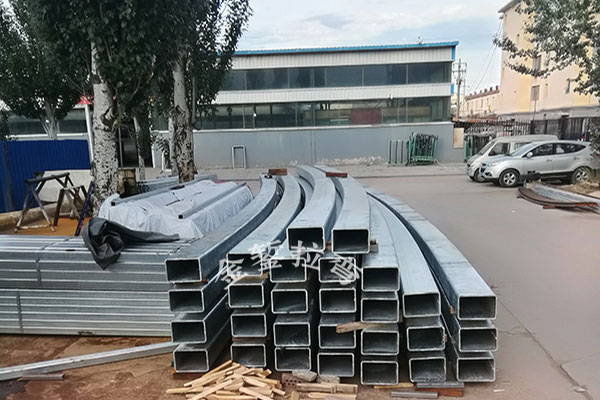Redefining the construction industry with innovative solutions, cuttin-edge technology and sustainable practices
Profile Bending 2025-06-21
Bending processing is a widely used manufacturing technique that allows for the shaping of materials into various forms and angles. The quality of the final product is influenced by multiple factors, which can lead to defects such as cracks, warping, or inaccuracies in dimensions. Understanding these factors and implementing effective control methods is crucial for achieving high-quality bending results.
1. Material Properties
The properties of the material being bent play a significant role in the quality of the bending process. Key material properties include:
- Yield Strength: Materials with high yield strength may require more force to bend, increasing the risk of cracking.
- Ductility: Ductile materials can deform without breaking, making them more suitable for bending. In contrast, brittle materials are more prone to fracture.
- Thickness: Thicker materials may require different bending techniques or equipment settings to achieve the desired shape without damaging the material.
- Grain Direction: The orientation of the material's grain can affect how it bends. Bending along the grain direction typically results in better quality, while bending against it may lead to defects.
Control Method: It is essential to select the appropriate material for the application and to understand its properties. Conducting material tests can help determine the best parameters for bending.
2. Bending Equipment
The type and condition of the bending equipment also significantly impact the quality of the bending process. Important factors include:
- Machine Precision: High-precision bending machines ensure accurate angles and dimensions. Machines that are not properly calibrated can lead to inconsistent results.
- Tooling: The design and condition of the bending tools (like dies and punches) affect the force distribution during bending. Worn or improperly designed tools can cause uneven bending or surface defects.
- Automation: Automated bending machines can enhance precision and repeatability, reducing human error and improving overall quality.
Control Method: Regular maintenance and calibration of bending machines and tooling are essential to ensure consistent performance. Investing in high-quality, suitable equipment for specific bending tasks can also enhance quality.
3. Bending Process Parameters
The parameters set during the bending process, such as angle, speed, and force, are critical to the outcome. Key parameters include:
- Bending Angle: The desired angle of bend must be accurately set. Incorrect settings can lead to over-bending or under-bending.
- Bending Speed: Faster bending speeds can lead to defects such as cracking or warping, especially in ductile materials. Slower speeds may yield better results but can reduce productivity.
- Back Gauge Position: The position of the back gauge determines the length of the material being bent. Accurate positioning is vital to maintain dimensional accuracy.
Control Method: Utilizing computer numerical control (CNC) systems can help achieve precise settings for bending parameters, allowing for adjustments based on real-time feedback to improve quality.
 4. Environmental Conditions
4. Environmental Conditions
Environmental factors such as temperature and humidity can affect material properties and bending outcomes. For instance:
- Temperature: High temperatures can soften certain materials, making them easier to bend but also increasing the risk of deformation. Conversely, low temperatures may increase brittleness.
- Humidity: Changes in humidity can lead to moisture absorption in some materials, altering their properties and affecting the bending process.
Control Method: Maintaining a controlled environment in the manufacturing facility can help mitigate the effects of temperature and humidity. Using temperature-controlled storage for materials can also preserve their properties prior to processing.
5. Operator Skill and Experience
The skill level and experience of the operator can greatly influence the quality of the bending process. Factors include:
- Knowledge of Equipment: Operators must be familiar with the bending machine's capabilities and limitations to make informed decisions during the process.
- Experience with Materials: Experienced operators are better equipped to identify potential issues with different materials and adjust parameters accordingly.
Control Method: Providing comprehensive training for operators can enhance their skills and knowledge, leading to better quality outcomes. Implementing standard operating procedures (SOPs) can also guide operators in maintaining high standards.
The quality of bending processing is influenced by a multitude of factors, including material properties, equipment, process parameters, environmental conditions, and operator skill. By understanding these factors and implementing effective control methods, manufacturers can significantly improve the quality of their bending operations. Regular maintenance, proper training, and the use of advanced technologies like CNC can help ensure consistent, high-quality results in bending processing.